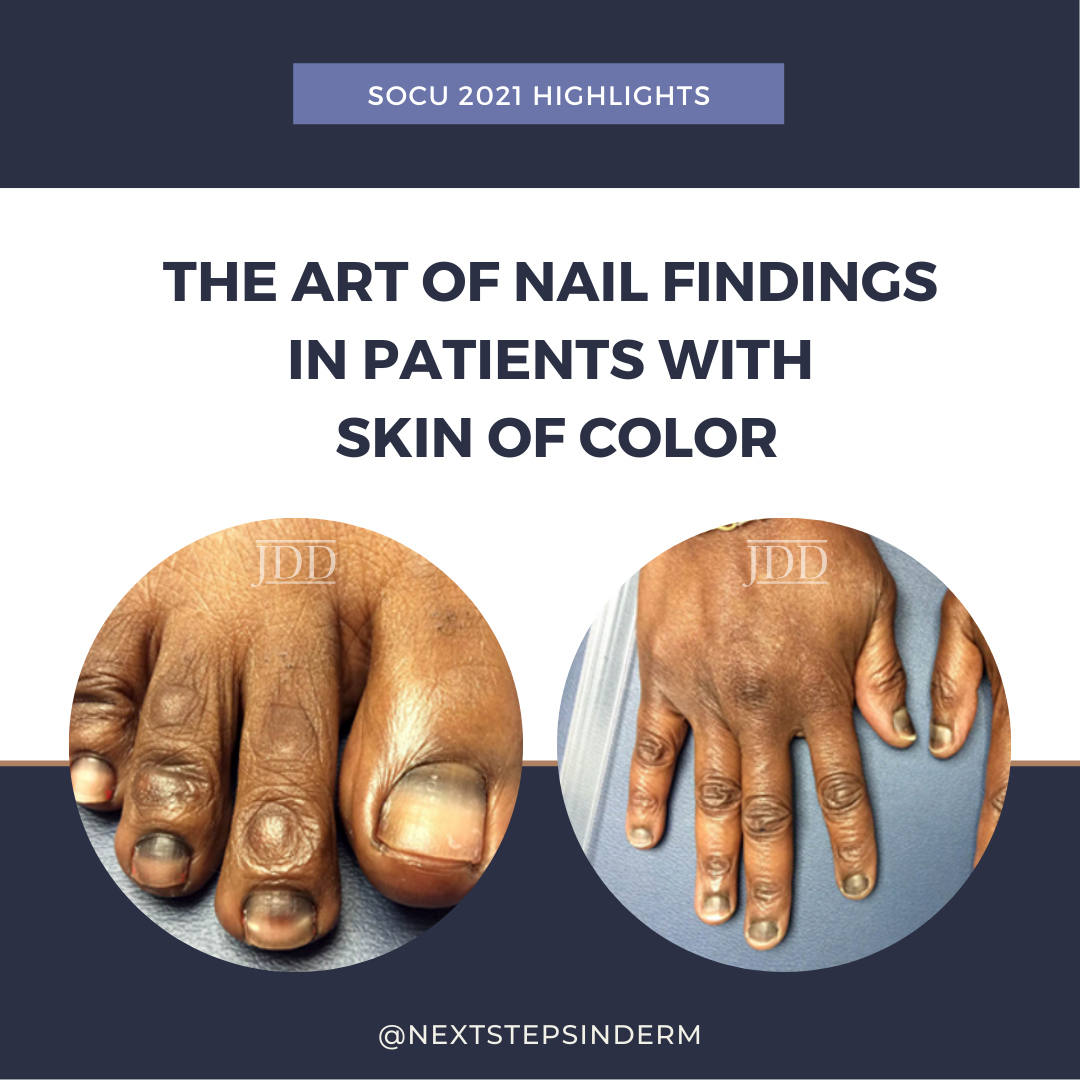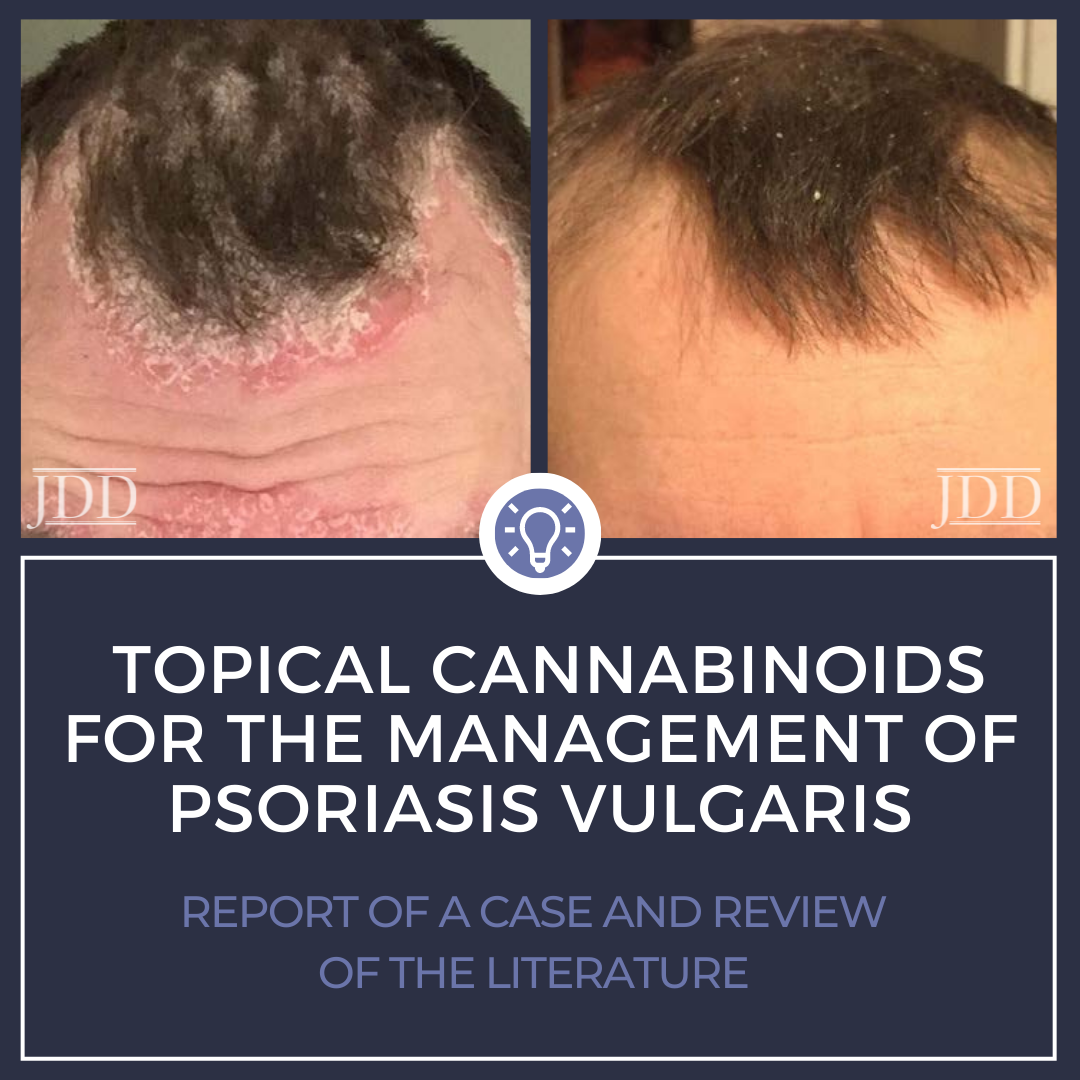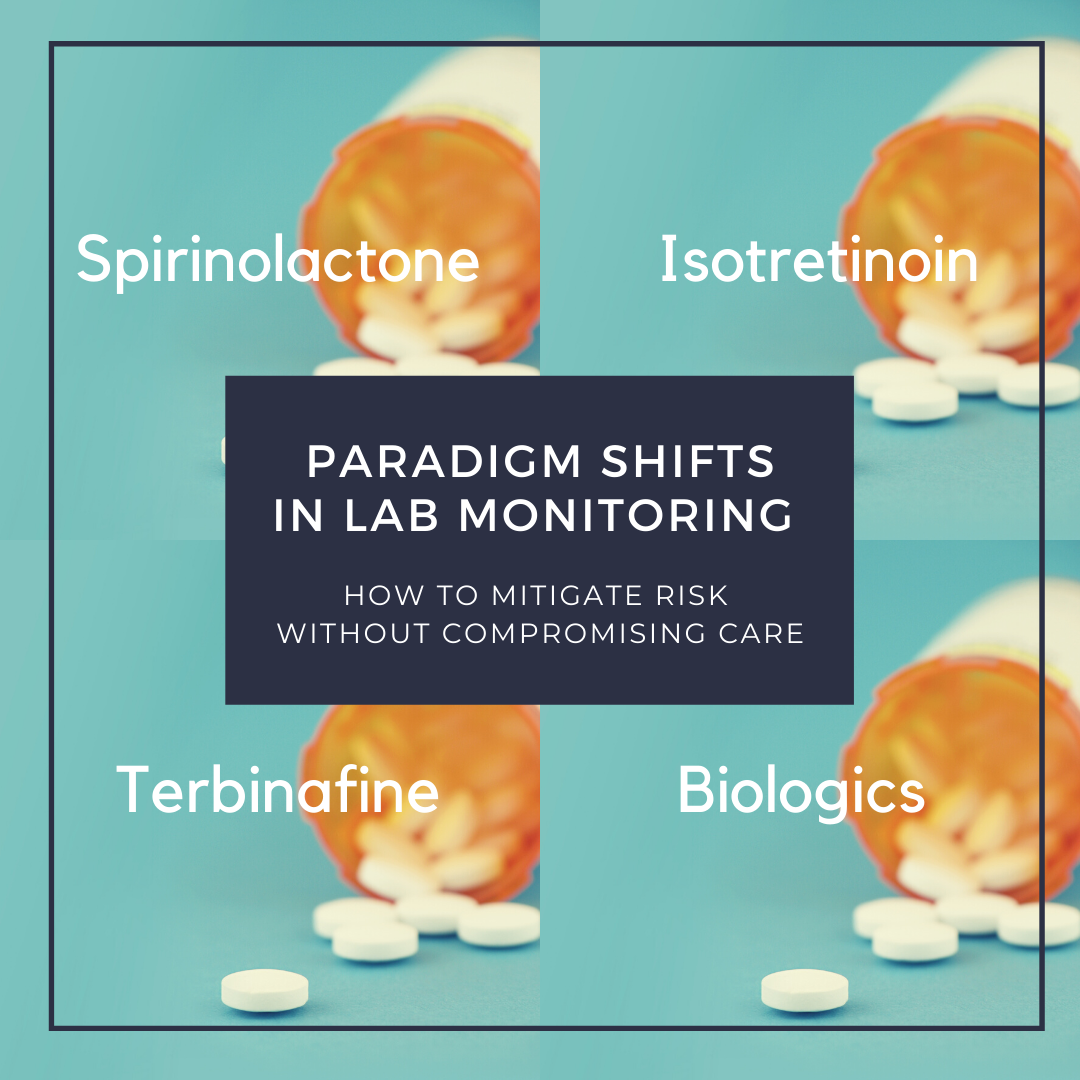The Art of Nail Findings in Patients with Skin of Color
 Dr. Shari Lipner, Associate Professor of Clinical Dermatology and Director of the Nail Division at Weill Cornell Medicine and President of The Dermatologic Society of Greater New York, shared her expertise of nail disorders in patients with skin of color: from nail psoriasis and onychomycosis to subungual melanoma.
Dr. Lipner’s lecture focused on the following key points (spoiler alert!):
…
Dr. Shari Lipner, Associate Professor of Clinical Dermatology and Director of the Nail Division at Weill Cornell Medicine and President of The Dermatologic Society of Greater New York, shared her expertise of nail disorders in patients with skin of color: from nail psoriasis and onychomycosis to subungual melanoma.
Dr. Lipner’s lecture focused on the following key points (spoiler alert!):
…
 Dr. Shari Lipner, Associate Professor of Clinical Dermatology and Director of the Nail Division at Weill Cornell Medicine and President of The Dermatologic Society of Greater New York, shared her expertise of nail disorders in patients with skin of color: from nail psoriasis and onychomycosis to subungual melanoma.
Dr. Lipner’s lecture focused on the following key points (spoiler alert!):
…
Dr. Shari Lipner, Associate Professor of Clinical Dermatology and Director of the Nail Division at Weill Cornell Medicine and President of The Dermatologic Society of Greater New York, shared her expertise of nail disorders in patients with skin of color: from nail psoriasis and onychomycosis to subungual melanoma.
Dr. Lipner’s lecture focused on the following key points (spoiler alert!):
… Continue reading "The Art of Nail Findings in Patients with Skin of Color"


 Primary hyperhidrosis (PHH) is a dermatologic condition characterized by overactivity of eccrine glands resulting in excessive sweating primarily affecting the palms, soles, axillae, and craniofacial area. PHH is not caused by other conditions, whereas secondary hyperhidrosis is caused by an underlying medical condition or medication side effect. Botulinum toxin injections are often used as second …
Primary hyperhidrosis (PHH) is a dermatologic condition characterized by overactivity of eccrine glands resulting in excessive sweating primarily affecting the palms, soles, axillae, and craniofacial area. PHH is not caused by other conditions, whereas secondary hyperhidrosis is caused by an underlying medical condition or medication side effect. Botulinum toxin injections are often used as second …  Authors Adam J. Friedman MD, Kimia Momeni BS, and Mikhail Kogan MD present a case of a young man with psoriasis managed with topical cannabinoids.
Introduction
The interest in use of medical cannabis for chronic dermatologic conditions such as psoriasis, eczema, and acne has been growing mostly owing to rapidly emerging decriminalization across the country and impressive commercially driven popu …
Authors Adam J. Friedman MD, Kimia Momeni BS, and Mikhail Kogan MD present a case of a young man with psoriasis managed with topical cannabinoids.
Introduction
The interest in use of medical cannabis for chronic dermatologic conditions such as psoriasis, eczema, and acne has been growing mostly owing to rapidly emerging decriminalization across the country and impressive commercially driven popu …  How to Mitigate Risk without Compromising Care
If you were to counsel a patient on every possible risk of a given medication, it would be a long list of extreme and rare potential outcomes and almost certainly leave the patient in doubt whether it is safe even to take. Frequent lab monitoring has been common practice and often used to reduce the perception of risk with systemic medication …
How to Mitigate Risk without Compromising Care
If you were to counsel a patient on every possible risk of a given medication, it would be a long list of extreme and rare potential outcomes and almost certainly leave the patient in doubt whether it is safe even to take. Frequent lab monitoring has been common practice and often used to reduce the perception of risk with systemic medication …  Tanning beds are NOT safer than the sun.1
More than 419,000 cases of skin cancer in the U.S. each year are linked to indoor tanning.2
Melanoma is the second most common cancer in females age 15-29.3
Tanning = DNA injury to your skin4
Skin exposed to UV radiation increases production of melanin to protect the skin from further damage. The increased melanin causing the tan color change is a si …
Tanning beds are NOT safer than the sun.1
More than 419,000 cases of skin cancer in the U.S. each year are linked to indoor tanning.2
Melanoma is the second most common cancer in females age 15-29.3
Tanning = DNA injury to your skin4
Skin exposed to UV radiation increases production of melanin to protect the skin from further damage. The increased melanin causing the tan color change is a si …